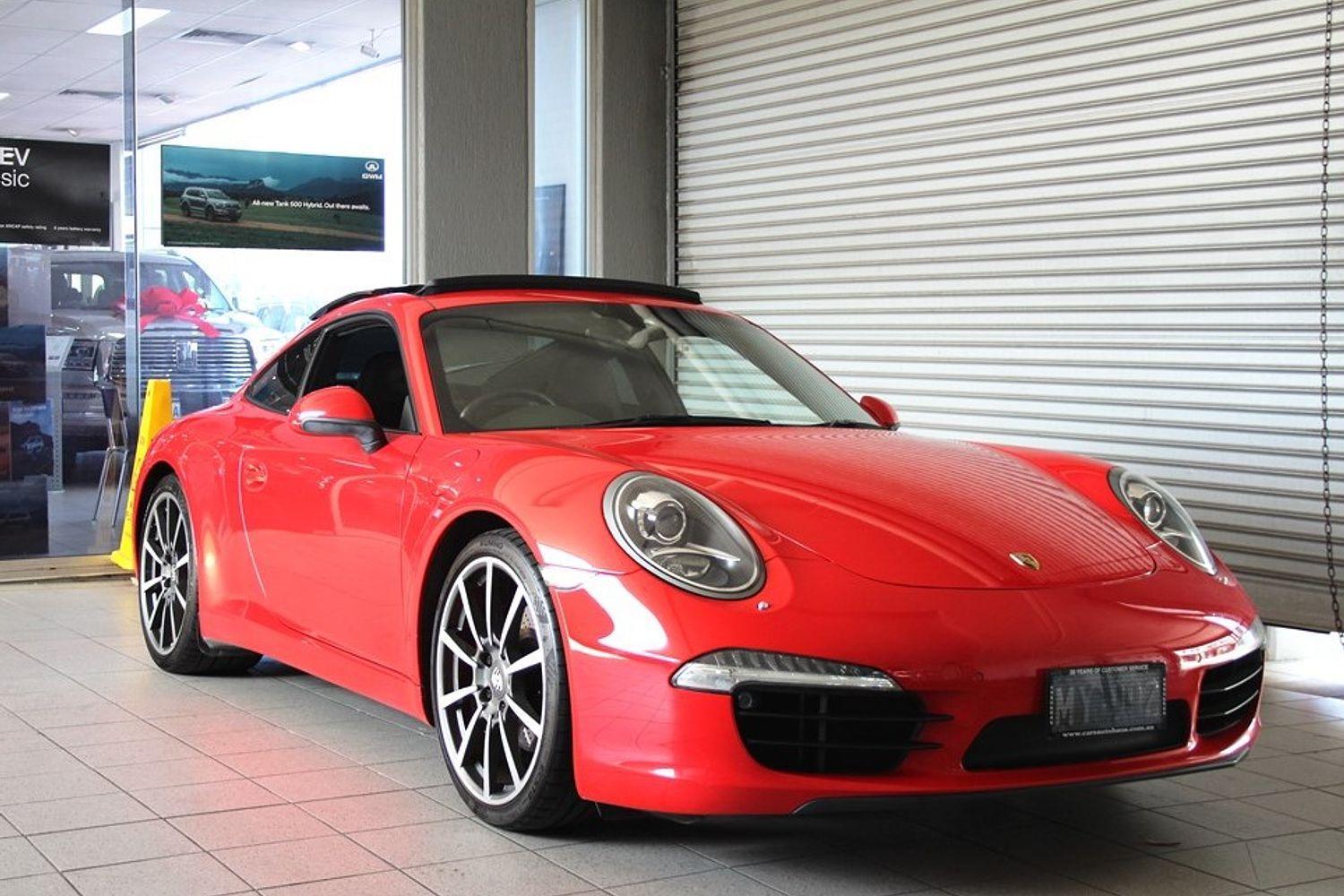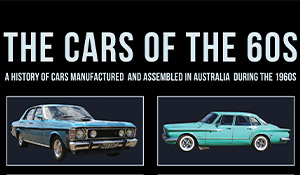Max goes racing!
Max Ellery lives near Castlemaine - the heart land of Australian Hot Rodding. So it seems only natural that Max's first built car would be a hot rod, in his case a '29 "A" Ford. Having visited Lake Gairdner, South Australia in 2002 and 2003 to watch the Land Speed Trials, he was amazed at the sight of the vehicles attempting Land Speed records for the different classes and engine displacement categories. The vehicles ranged from Lakesters originally made from WWII bomber aircraft belly tanks, production sedans and coupes as well as motorcycles in a broad range of tune and modification. Max decided that he must build one of these vehicles and have a drive himself.
The choice of a production class vehicle as his first DLRA racer was a good choice to get a taste for the racing without building a special vehicle from the ground up. Looking at Commodores and Falcons, Max decided on a VL Commodore - naturally a V8!
Without going into too much detail on the intricacies of the classing system, all classes are divided into various engine sizes, enabling different displacement engines from the same type of engine configuration. "E" class caters for engines up to 260cu.in. displacement, therefore a 4.2litre V8 (253 cu.in.) engine was chosen, this small engine has a good reputation for high rpm and good horsepower.
The engine for Max's VL was built by Clint Curran of Pro-Stroke with a displacement of 258 cu.in. Clint spent many hours working on the engine, the crankshaft came in for special treatment. The block was tested for any irregularity then cleaned up to make sure the engine oil flowed freely. A set of JE forged pistons was installed, these pistons had to take the punishment of high rpm and raise the compression ratio, giving extra horsepower. A set of Yella Terra cast iron heads with 1.810 inch intake and 1.58 inch exhaust valves was installed to help the engine breath. Pacemaker extractors leading into two 21/4 inch pipes were then installed as the exhaust system. The carburettor is a Holley 650cfm double pumper bolted to a Torquer single plane intake manifold; a T & N velocity stack was installed to catch the bugs.
The vehicle needed to be lowered as much as possible, to help with serodynamics. Using the stock suspension, Greg Waddington sorted out the front suspension and Max installed special low springs in the rear. The front bumper, keeping all the stock panels and brackets, needed a few extra brackets so it could be removed quickly allowing the vehicle to be trailered. The original fuel tank was retained, however a Holley electric fuel pump was added to increase fuel flow.
Steve Kaitler installed a 6 point roll cage to meet with DLRA and CAMS requirements; a racing seat was installed along with the roll cage. Steel webbing was welded between the roll cage and A and B pillars. This was purposely designed to give the vehicle much more strength and rigidity compared to a roll cage fixed to the floor pan only.
With the engineering sorted, the exterior now needed attention. Citric Acid was chosen as a suitable colour for the paint work. Yes, it's a Falcon colour, but Max reckons it keeps the Ford friends on side!
So how did Max go in his debut run at Lake Gairdner? The vehicle and engine performed extremely well, according to Max.
This year's event was well attended with over 100 vehicles, but a thunder storm at the top end of the lake blew 90mm of water over the track stopping runs for 2 days (restricting a World record attempt for a bike that had come out from the USA, amongst others - refer to the April issue of our companion magazine, Just Motor Bikes for more info). This only left three days of driving, therefore most drivers only had time for 2-3 runs. As all new cars and drivers have to make licensing runs, Max only got the chance to complete his two licensing runs and cannot wait for next year's event to make some full power runs - a fast run should be 'on the books' for Max in 2007!
Dry Lakes Racing Association at Lake Gairdner 2006
Lands Speed Record racing is a relatively new sport to Australia. Many of us will be familiar with the Bonneville land speed records in USA and Sir Donald Campbell's land speed trails on Lake Eyre South. This sport originated from people improving their street and home made vehicles, so they would go faster. It was soon discovered that it is no good having a powerful engine pushing a brick shaped vehicle down the salt track. People started to streamline their vehicles by removing panels and reshaping the front of the vehicle to lessen wind resistance.
Andy Jenkins Mike Davidson and Ted Robinette were instrumental in starting land speed record racing in 1990 in Australia, and after many kilometres searching for the right place settled on Lake Gairdner. The Dry Lake Racing Association (DLRA) was developed and holds racing every 12 months, people from all over Australia make the trip either with their vehicles or just to see the action.
The 2006 event was held on the week March 6th to 10th, many committee members travelled to the lake 4-5 days early to prepare the track, timing lights, pit area, entrance to the lake and get the camp into place. This is not your ordinary race event everything has to be transported in including water, toilets, lighting, electric generators and fuel. Fire and emergency personal have to be organised all this is set up a 2-3 hours drive on a gravel and dusty road leaving the bitumen at Iron Knob.
Everything was going like clock work, then Saturday morning people woke up to 90mm of water over the track and south end of lake, but there was no rain overnight. A thunderstorm two nights prior at the top end of the lake near Woomera had resulted in a large pool stretching over many kilometres of lake salt. The next two days a northly wind blew the water to the southern end over the race track, an emergency meeting took place as vehicles and crews were arriving. It was decided to wait, as a weather change that had a southerly wind was predicted.
Sure enough, on Sunday the wind blew from the south and literally blew the water away and dried out the track sufficiently to allow racing to start on late Tuesday.
Wednesday and Thursday saw vehicles lined up for 6-7 hours just to have one run, but the wait and months of preparation was worth the effort. On Friday the wind turned around to the north again and by late afternoon water was approaching the strip at a rate of 4 meters per minute, therefore racing was stoped at 4.00pm.
119 vehicles and drivers competed, 37 records were broken, and some of these consisted of:
Vic O'Neil - 1932 Ford Roadster - 125.918mph - B/GCC class
Roy Brand - XF Falcon Ute - 124.584mph - A/M-Ute class
Don Noble - Nissan Skyline - 141.187mph - F/GC class
Greg White - XA Falcon Coupe - 199.225mph - C/PRO class
Derrick Borgas - XD Falcon - 216.467mph - AA/GALT class
Kyle West - Nissan Bluebird - 122.440mph - G/BGCC class
Graeme De Courcy Cann - 2005 Lakestar - 68.609mph - H/GL class
David Lowe - Lakestar - 154.526mph - D/GL class
Rod Hadfield ran 240.000mph before his vehicle broke down; a small fire started which ignited his fuel system causing an explosion at the front of the car. Rod was safe due to the stringent safety regulations and the excellent work of the fire emergency crew.
John Lynch in his Belly Tank Lakestar made a 253.860mph pass, not as quick as his 301mph last year, but still a good effort.
Lake Gairdner is becoming known as one of the best salt lakes in the world for salt racing. An American contingent of motorcycles made several attempts at FIM records on the lake, they were looking for 350mph. Sam Wheeler rode at 249.014mph on the fully bodied streamliner, not as fast as he wished but still a good run. Joe Amo broke a FIM record at 198.259mph for the P/PG class
Some other bikes with records:
Phil Cvirn - Harley Davidson - 147.947mph - MPS/PF 1650 class
Nigel Begg - 1977 Yamaha - 110.846mph - P/G 500 class
Robert Bishop - Special Construction - 144.848mph - APS/BG 3000 class
Bob Lambert - Honda CT - 71.574mph - M/F 175 class
Check the Dry Lake Racing Association web site at www.dlra.org.au for more info.

















